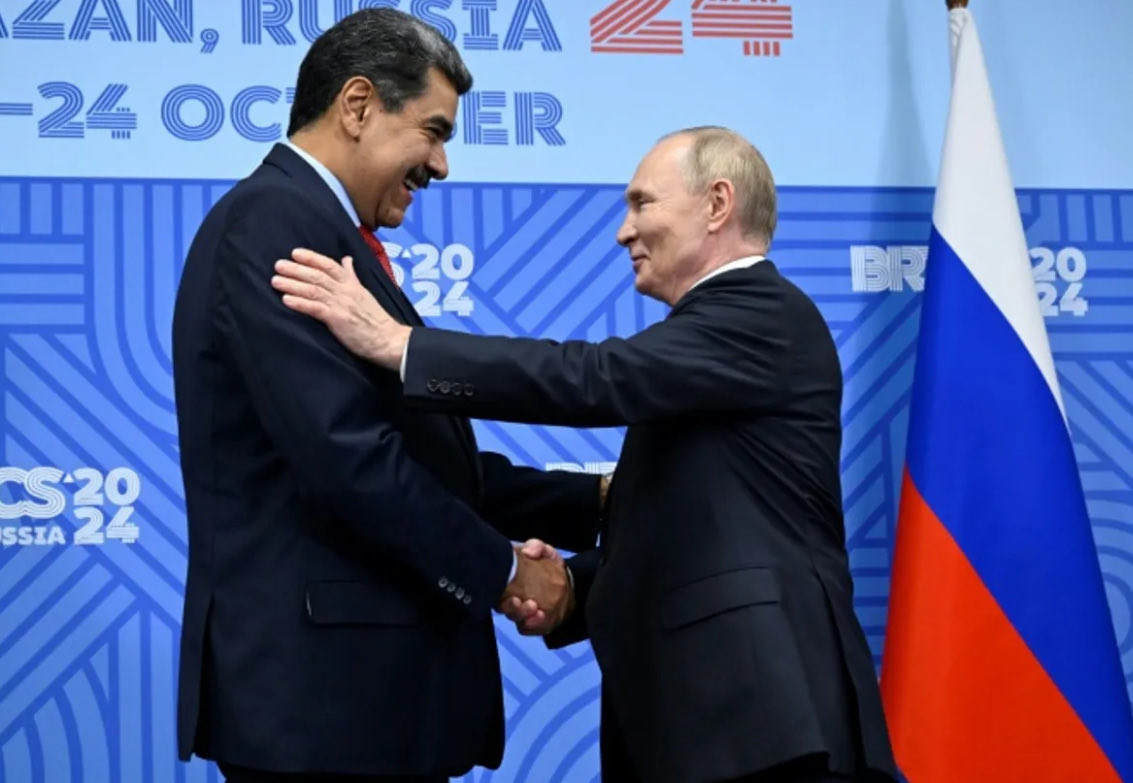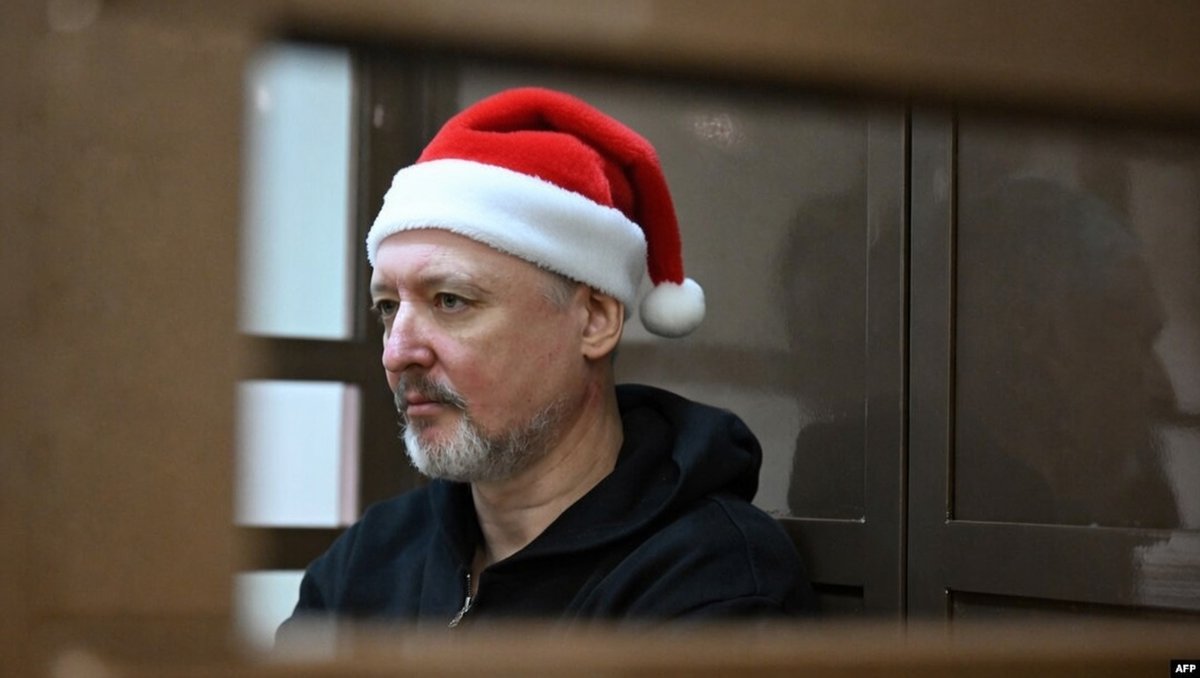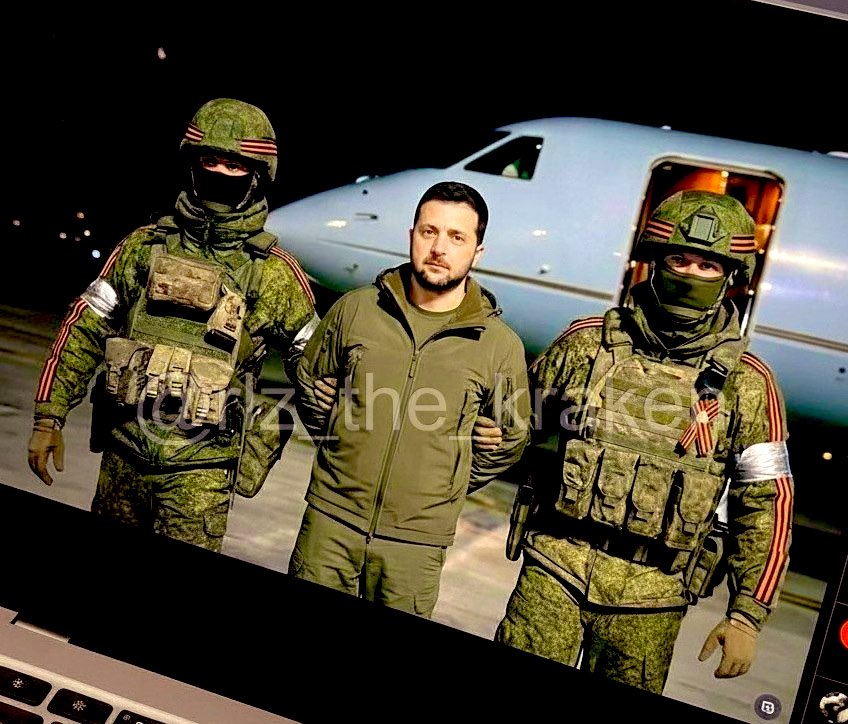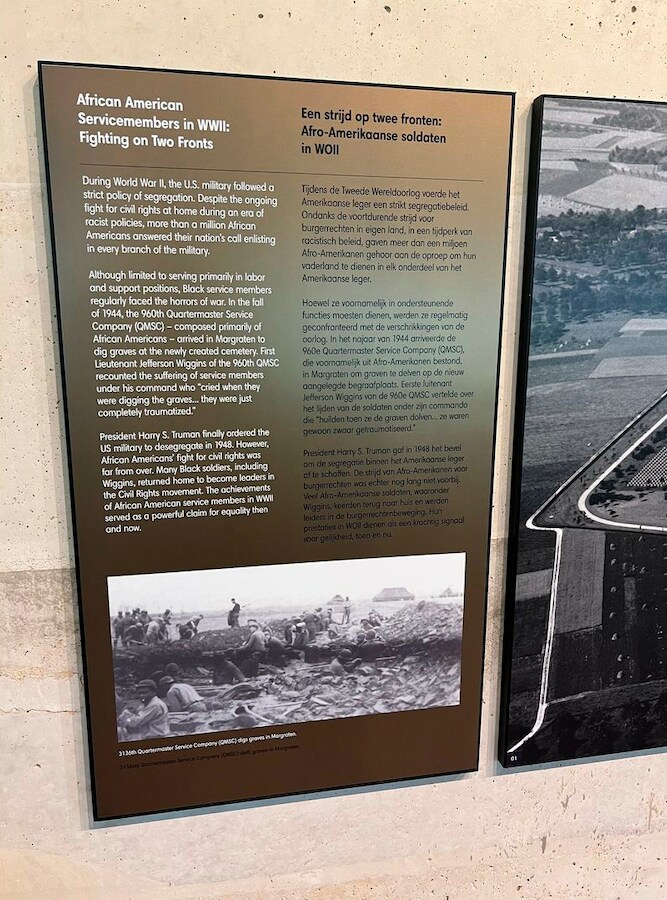1/ @ian_matveev, who's one of the smartest Russian-language commentators on the Ukraine war, has posted a very interesting and detailed thread discussing the reasons for Russia's defeat east of Kharkiv. An English translation, with his permission, follows (LONG thread ahead!). ⬇️
2/ From @ian_matveev: Why was the Russian army defeated and forced to flee the Kharkiv region? Not only local mistakes and a great attack by the Armed Forces of Ukraine were to blame, but also the fundamental problems of the Russian grouping in Ukraine. 
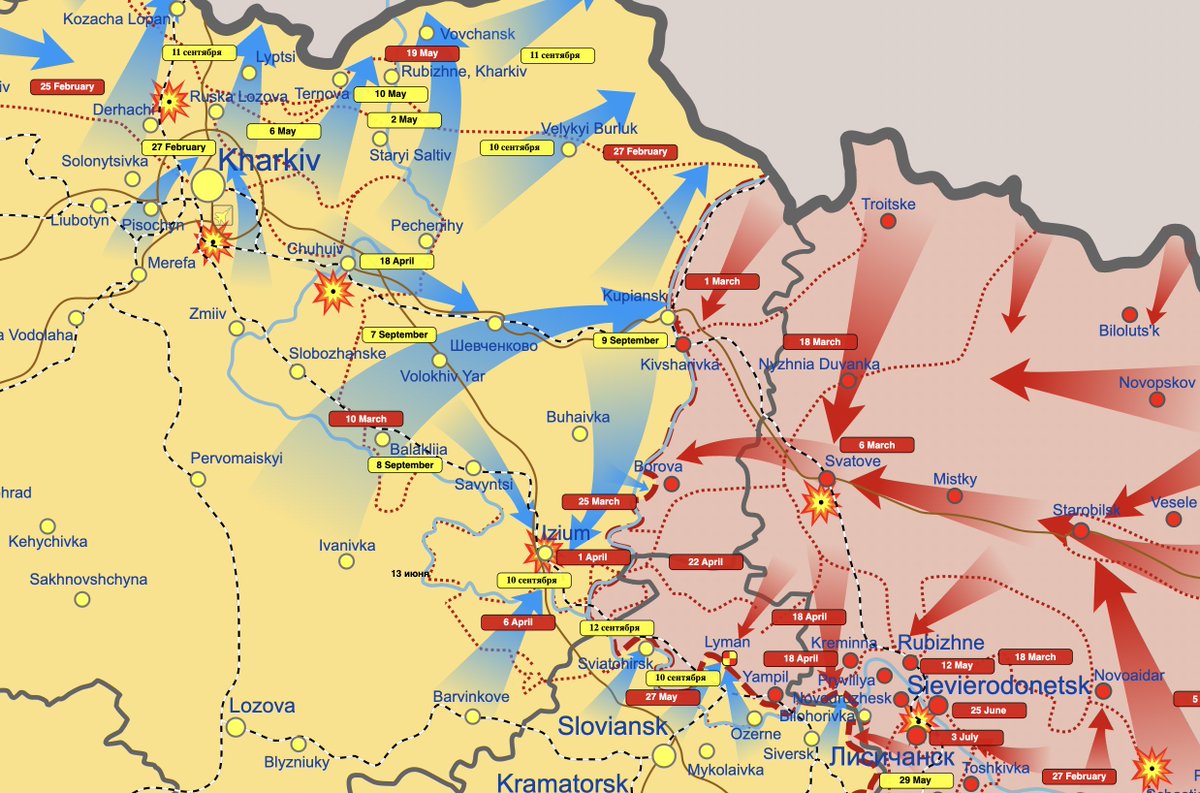
3/ In recent days it seemed that something fantastic was happening. However, if you remember everything that analysts have been writing about and that we have been talking about, it becomes clear that the defeat near Izyum is a logical development.
4/ Moreover, we may well expect a repeat of such an offensive in the near future. At the end of the thread I will explain why, and I will also briefly discuss the actions of the AFU, because a successful offensive is not only the fault of the losers, but also of the winners! 

5/ What happened in Kharkiv oblast is the result of a sum of gross mistakes and unresolved problems in the Russian army:
A) Lack of unified command
B) Supply failures
C) Lack of replenishment
D) Poor training of the army
E) Tactical mistakes
Let's look at each in more detail.
A) Lack of unified command
B) Supply failures
C) Lack of replenishment
D) Poor training of the army
E) Tactical mistakes
Let's look at each in more detail.
6/ To start with, I want to stop describing what invaded Ukraine and is still fighting on Putin's side as "the Russian army". It is not the Russian army, it is a kind of military grouping in which the army is not in command everywhere and not always. Let's start there.
7/
A) Lack of unified command. Over the three summer months, it has become clear that the Russian grouping consists of several military formations. Not only do they not have a unified command, but they are also often at odds with each other.
A) Lack of unified command. Over the three summer months, it has become clear that the Russian grouping consists of several military formations. Not only do they not have a unified command, but they are also often at odds with each other.
8/ There are also problems with the local authorities - propaganda regularly publishes complaints that drones, thermal imaging cameras and other equipment bought by volunteers for the military are not allowed across the border. 

9/ The Wagner PMC is the most privileged group. Apparently they only report to the centre and can use LNR/DNR and army units for their tasks. They even have their own aviation, handed over by the air force (Su-25s cannot be bought in a military store) and their own targeting.
10/ Prigozhin really feels he is a separate commander and even a leader in this war - a title he snatched from Kadyrov, who was promoting himself until the capture of Mariupol. Prigozhin and his PMC can do anything - even freely recruit in prisons. zona.media/article/2022/0…
11/ The 3-5,000 "Wagnerites" are not subordinated to the general army structure and fight autonomously. At the same time, Wagner is the most professional part of the entire Russian grouping in Ukraine.
12/ They are the ones who have achieved at least something in recent months - they took Uglegorska TPP and reached Kodema. 

13/ Troops from the terrorist DNR and LNR are the most disenfranchised. They are sent anywhere, for example, some militia are defending the Kherson front.
14/ There have been many examples of LNR people recording videos complaining that they are being sent to fight for the DNR. And this is not their territory.
15/ The "LNR" militia are the worst equipped, they are literally ragamuffins who have to collect helmets, flak jackets, socks and other things from volunteers. They are the most unmotivated. Most of them are displaced residents of the occupied territories.
16/ The Russian army is not much better at fighting than the L/DNR, but still has more adequate heavy equipment. However, after the losses of the start of the war, it seems to me that the Russian army in Ukraine now has only a few paratroopers, marines + artillery and aviation.
17/ There are many questions about their professionalism, I will have a separate section on this. But we see that most often some kind of air assault detachments fight, if we are talking about the army. And the main thing that regular units do is shelling.
18/ The most enigmatic participants in the conflict are the Rosgvardia. They also include the "Kadyrovites", who, judging by Ramzan's statements, will soon be back at the front again. Well, bushmen, look out, this time you're definitely finished.
19/ The Rosgvardiya is not designed for warfare. They have no tanks or BMPs, only armoured vehicles like Tigers and Typhoons, which can be killed by almost anything. 
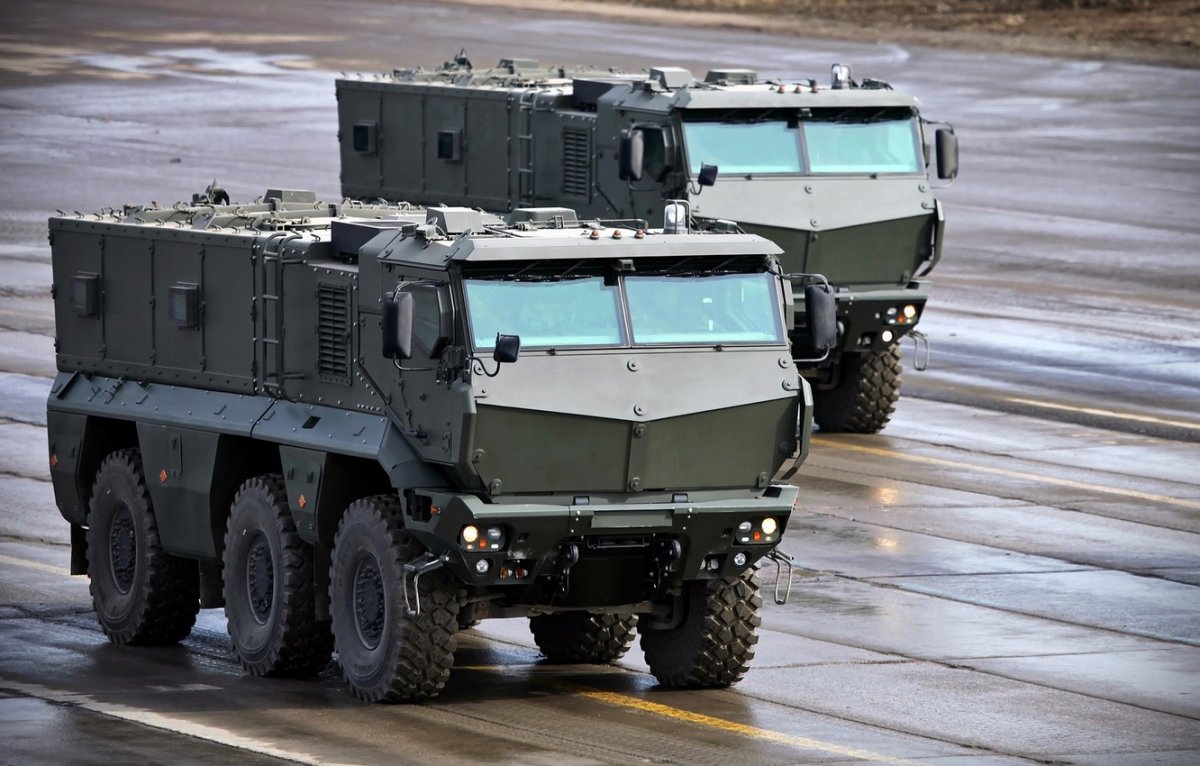
20/ But at the same time, judging by Zolotov's report to Putin, the Rosgvardiya are not just protecting the rear, but actually fighting.
21/ Moreover, judging by the same report, and by Kadyrov and his Chechen Rosgvardiya, the security forces are not part of the army group and act as they wish. Well, within certain limits, of course, but still. And in the defeat at Balakliia, Rosgvardiya played a decisive role.
22/ To summarise: The Russian army in Ukraine is not a single mechanism, but several factions with their own commanders, control system and structure. Some have heavy weaponry. Others do not. Some have only transport, while others are bumming around campfires without socks.
23/ For some, war is a job for money and pleasure (PMCs), for others it is a compulsory obligation (the L/DNR), others have no idea what they are doing here (the Army) and the Rosgvardiya may be well motivated, but it is not very combat-ready on its own.
24/ It is therefore difficult to expect good cooperation between these groups. Is Prigozhin going to work under the orders of some general? He answers to Putin personally, who is this general to him?
25/ Or the OMON, they are answerable to Zolotov, their losses are not even counted in the military.
Hence, there are lapses in communication, a slow response (until they agree at the top) and a lack of versatility.
Hence, there are lapses in communication, a slow response (until they agree at the top) and a lack of versatility.
26/ How would you throw the Rosgvardiya against enemy tanks? And will the Wagner PMC go to die for the sake of a platoon from the "DNR"? A fragmented army is always a big problem.
27/
B) Supply failure. The Russian army's poor supply situation in general has been discussed many times before, but specifically in the area of the Ukrainian offensive the situation was particularly unfavourable.
This is noticeable if you look at a map.
B) Supply failure. The Russian army's poor supply situation in general has been discussed many times before, but specifically in the area of the Ukrainian offensive the situation was particularly unfavourable.
This is noticeable if you look at a map.
28/ The Oskil River restricts cargo transfer – there are only three available crossings. And the railway only goes as far as Kupiansk. The roads to Izyum and Balakliia were easily closed by Ukrainian artillery (blue arrows). 
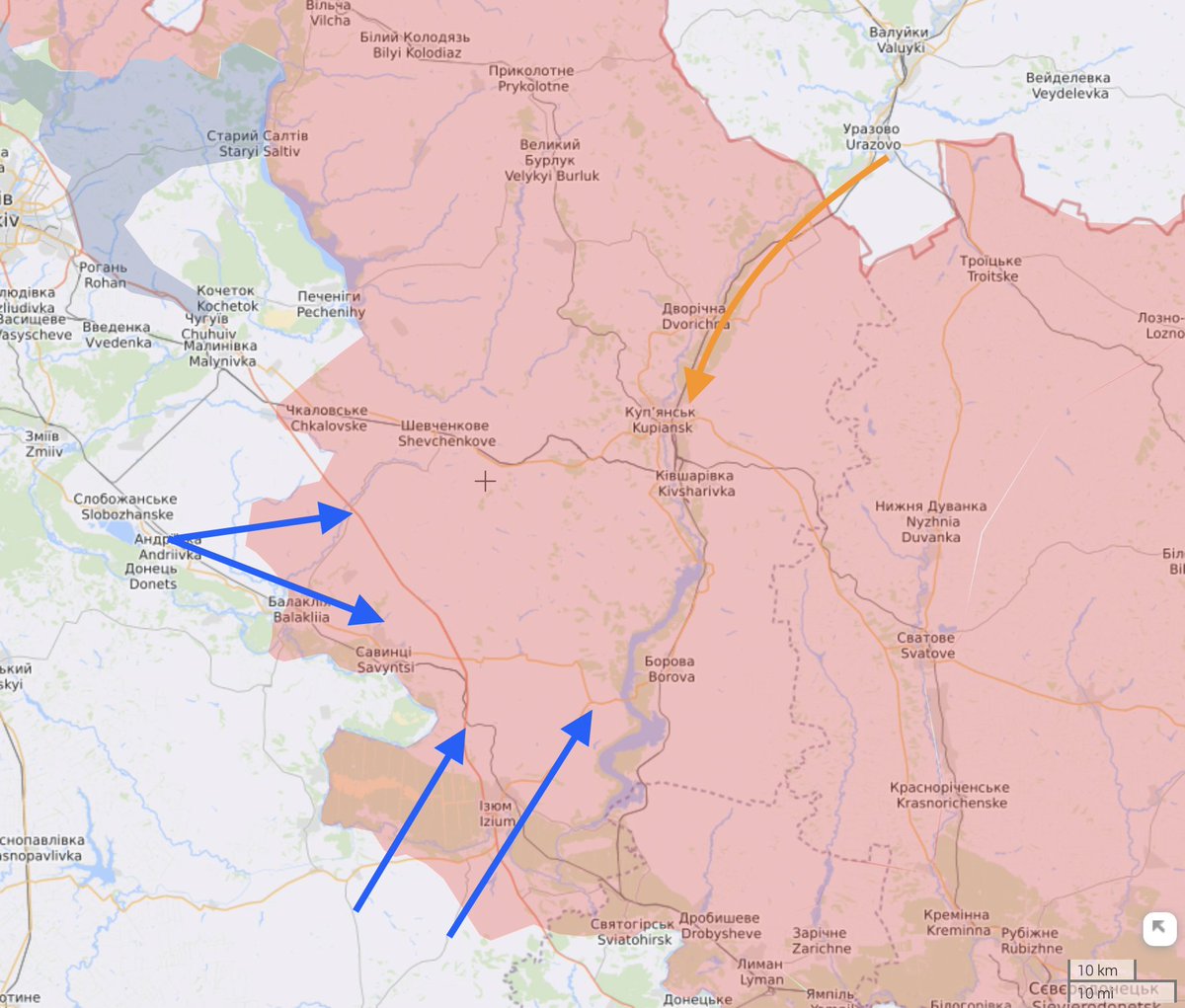
29/ An interesting detail: in the captured warehouses in Balakliia we see a pile of HEAT shells for tanks. Tank duels are very rare, most are destroyed by howitzers or anti-tank missiles. These shells are trash brought in instead of more useful landmines.
30/ It should not be forgotten that in recent months the Ukrainian armed forces have been actively destroying shells along with their depots. And it does not matter that this happened more often in other areas.
31/ If there were fewer shells in general, then they were being taken to active sections of the front. And here there the fighting paused for two months. Why bring them in?
As a result, during the AFU's attack, the Russian army found itself with a bare ass in the area.
As a result, during the AFU's attack, the Russian army found itself with a bare ass in the area.
32/ But shells and fuel are not everything. Supply is also the quick delivery of reinforcements. But we should remember that any redeployment of forces by the Russian army takes at least a week.
33/ It was only on the day that Balakliia was taken that official sources started to talk actively about the transfer of reinforcements, but it was too late to save the front at that time. 

34/ Surprisingly, however, even a few months did not help the Russian army to organise sane logistics in already occupied territory.
And you may ask, "but they escaped so quickly, isn't that an example of perfectly working logistics?"
And you may ask, "but they escaped so quickly, isn't that an example of perfectly working logistics?"
35/ My answer is that they were probably running away in very small units that had abandoned all their equipment on the spot. And why the squads were small, we will discuss further.
36/
C) Lack of replenishment. The Russian army is not fighting well because there is... no one to fight. After six months of war, Putin and Shoigu still have no adequate way to make up for losses. Significant losses. (yes this meme is everywhere, but it's beautiful!)
C) Lack of replenishment. The Russian army is not fighting well because there is... no one to fight. After six months of war, Putin and Shoigu still have no adequate way to make up for losses. Significant losses. (yes this meme is everywhere, but it's beautiful!)
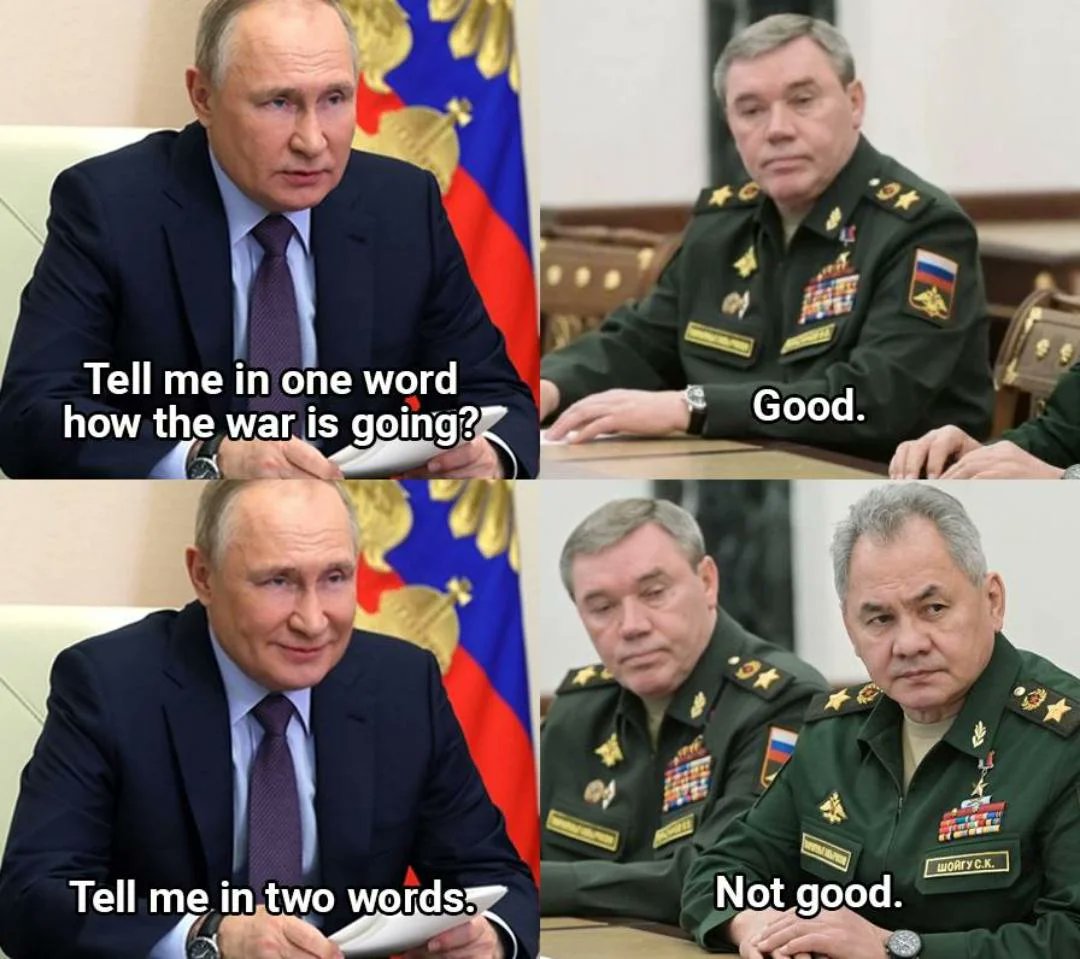
37/ All this summer, analysts wrote that the Russian army was struggling to recruit volunteers. In particular, the numerous "regional" battalions are recruiting only 30-50 percent of the required number.
38/ Here is a fresh video from a prison colony where Prigozhin invites prisoners to fight. The motivation is simple - you either die or go free in six months. For those who have to sit for 10-20 years in a Russian prison this is an interesting option.
39/ But this way only Wagner is replenished. For the army, cannon fodder is sought from state institutions and hospitals, and homeless people and public sector workers are persuaded. But there is plenty of evidence that this collection is going badly.
40/ While the state propaganda shouts about a "people's war" and Russia's battle against the whole world, we don't see any queues at the military registration and enlistment offices.
41/ Because in reality no one wants war. And no one really wants to die for Putin or even for many rubles. The Kremlin has completely botched the task of "selling" the people a war. Because, as usual, there was no sane plan.
42/ After all, from the beginning the war was called a "special military operation" to show that "somewhere out there, professionals are defeating terrorists, everything is easy and simple. Putin came out with his statements "there are no conscripts there, only professionals".
43/ The propaganda kept repeating how awesome everything was and that everything was a victory. Then all of a sudden it wasn't great, and the retreat began - even Putin's supporters wondered "what the fuck? And the Kremlin had no adequate answer and no plan.
44/ Warehouse burns – propaganda claims 1,000 Bayraktars have been shot down. Belgorod is bombed – propaganda tells of Pisky's third capture in a week. Explosions in Crimea – it's the "lens effect" and self-igniting shells. AFU advances – Konashenkov talks about "redeployment".
45/ Many supporters of the war directly resent the fact that the government is trying to deceive them. That it is disrespectful to the soldiers who are actually dying on the front line. The government's overall credibility in military terms has plummeted.
46/ Hence the talk of Shoygu's resignation, by the way.
And now that the Russian army is suffering one defeat after another, propaganda is screaming about a "people's war" and that everyone must pull together.
And now that the Russian army is suffering one defeat after another, propaganda is screaming about a "people's war" and that everyone must pull together.
47/ But no one really wants to fight anymore, the war has not been properly and timely "sold" to those who were ready to buy.
So a potential volunteer sits there and thinks:
So a potential volunteer sits there and thinks:
48/
- They don't know how to fight, but they lie.
- They insult the military with their lies.
- They didn't call when it was good, they call when it's bad.
- They're nothing to me, I have to die for them.
- Mobilisation hasn't been announced yet.
- They don't know how to fight, but they lie.
- They insult the military with their lies.
- They didn't call when it was good, they call when it's bad.
- They're nothing to me, I have to die for them.
- Mobilisation hasn't been announced yet.
49/ That is why there are few volunteers. Not because there are few who want to fight, but because the whole war looks too adventurous for them, it smells too bad. For the most part it smells of corpses and lies. The Internet, after all, helps to convey the real state of affairs.
50/ All this leads us to the logical conclusion, which has been voiced many times before. The Russian army is understaffed. It fights with too few people, and it is particularly difficult to cover any of the difficult specialisms. Tank drivers, for example.
51/ On paper, however, everything is fine. This is how Russian officials' traditional corruption works. It is quite possible that the Russian command thought that fully equipped units were stationed in Izyum and Balakliia and therefore there was nothing to be afraid of.
52/
D) Poor training of the army. This problem is born out of the ones I described above. Again, it is no secret that the Russian army is not very good at warfare. But here I would like to focus your attention on details.
The Russian regular army is losing a lot of officers.
D) Poor training of the army. This problem is born out of the ones I described above. Again, it is no secret that the Russian army is not very good at warfare. But here I would like to focus your attention on details.
The Russian regular army is losing a lot of officers.
53/ MediaZone and the BBC found a thousand killed officers just from open source data and analysis. In all, 750 of them are low-ranking officers, lieutenants, captains. All are those who work "on the ground" – directly in charge in combat. bbc.com/russian/featur…
54/ Officers who were in the line-up before the invasion are more qualified than those who have been drafted in to replace them. If at all, the NCOs may have been promoted to non-commissioned officers.
55/ Russian junior commanders are already gutless - a consequence of the Soviet system. And now they are also unprofessional.
Similarly with the rank and file. In the Wagner PMC, convicts are fighting after two weeks of training.
Similarly with the rank and file. In the Wagner PMC, convicts are fighting after two weeks of training.
56/ Yes, there is a professional part, but there are not many of them. It is about the same, from 10 days to a month, to prepare volunteers for the regular army. It seems that the mobilised in the "LDNR" are not trained at all.
57/ Rosgvardiya, as I said before, is not designed for combined arms combat, which means that their training is not a priori suitable for war, even the best. OMON and SOBR can carry out local tasks like mop-up operations. But not defending the front lines. 
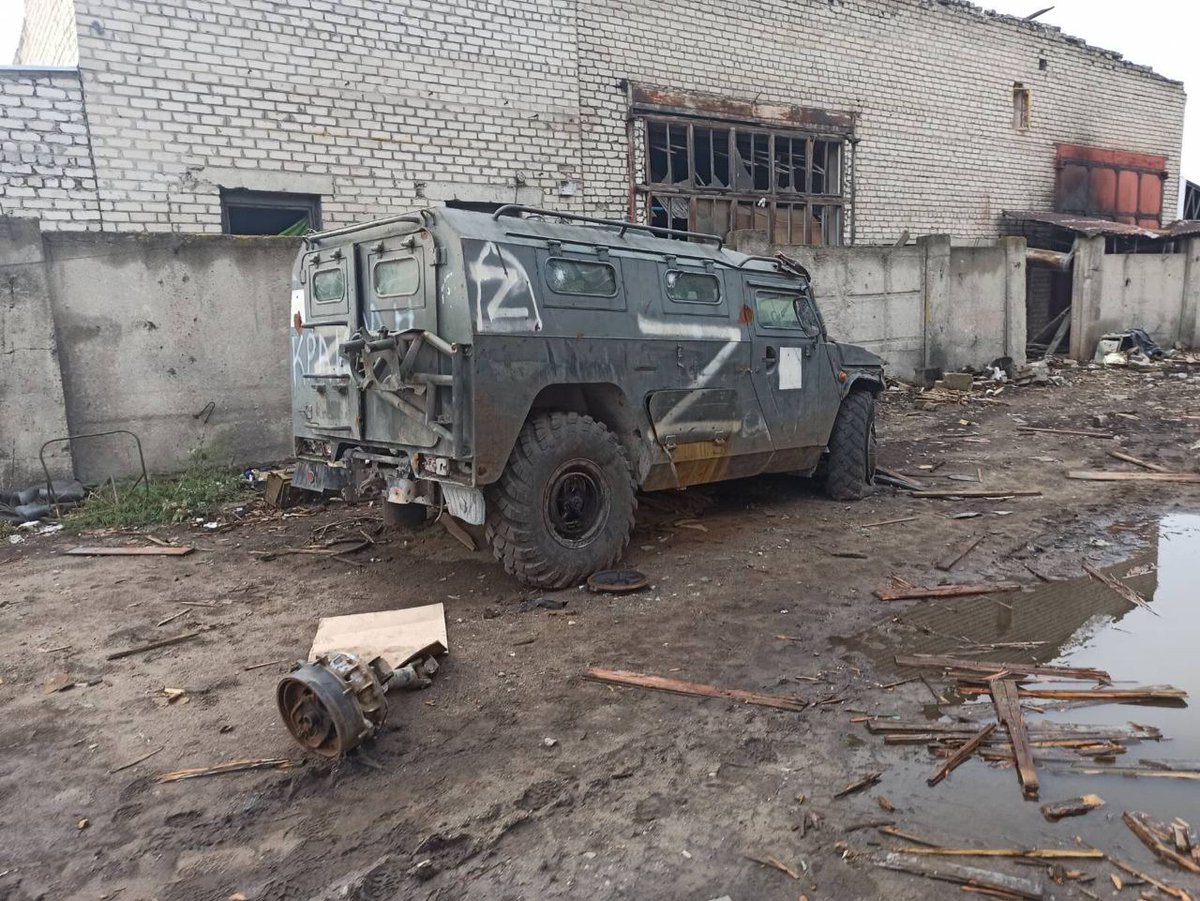
58/ But the professionalism of an army is not just a matter of the soldiers' skills. It depends on the weapons being used to fight. And the weapons in the entire Russian grouping are extremely poor. Only small arms are at the necessary level.
59/ And even then they lack night equipment - sights, thermal imaging cameras, etc. These are all collected and ordered by volunteers and sent to units at the front.
The same is true of small reconnaissance drones and other equipment. And so, on drones, let's elaborate.
The same is true of small reconnaissance drones and other equipment. And so, on drones, let's elaborate.
60/ The army itself provides only Orlans, a primitive reconnaissance drone with a built-in camera. They are often shot down and generally insufficient. 

61/ The Russian military speaks with envy of the Ukrainians equipping every platoon with a drone, while they have one drone per company – already a blessing. Russian "war correspondents" have written about this.
62/ Lack of drones = poor intelligence. And the Russian Federation doesn't have much of an eye in space either.
63/ The other option is aerial reconnaissance. However, there is also a problem with the equipment. Russian planes, even the new ones, are rather weak. The Ukrainians regularly shoot them down. During the offensive, Su-34s and Su-25s were destroyed.
64/ Or, for example, take this Su-25 which went down on its own. So what, he's getting old, I guess.
65/ The Russian air force is really afraid of flying far into Ukrainian territory. The repeatedly destroyed Ukrainian air defences rise from the dead at the most inopportune moment and launch anti-aircraft missiles. Therefore, they cannot rely on aerial reconnaissance either.
66/ So it turns out that the Russian military might not have detected the AFU's preparations for an attack due to poor intelligence. The Russian army was not ready for drone warfare. There are no drones and no operators.
All right, but what about the rest of the equipment?
All right, but what about the rest of the equipment?
67/ There are tanks, BMPs, TOSs and artillery. Yes, but their quality is also questionable. For six months the Russian army has been losing new equipment and replacing it with old. Especially with tanks taken out of storage. For example, the latest trophy of the AFU - a T-62! 

68/ Many people wrote, "So what's the big deal, this tank will stand there and shoot, it doesn't really matter if it's new or not." Let me explain why this could critically affect the combat effectiveness of Putin's units.
69/ From the footage from liberated Izyum, we saw that the equipment of the 4th Guards Tank Division - "Kantemirovskaya" - was parked there. It was a part of the 1st Tank Army. And remember that this army suffered significant losses near Sumy in March.
70/ To restore the division's fighting ability, not only soldiers were needed, but also equipment. Where to get it from? From the warehouses. Tanks from storage, in poor quality, obsolete. It is not known how the engines are, probably not all parts fit.
71/ This means that such tanks and self-propelled guns will break down more often. Let's assume a 10% percentage of breakdowns. If 1 tank out of 10 breaks, the unit can keep moving. And if 3 are broken? Fighting ability drops sharply, you have to think about repairs and stop. 



72/ And that's not in battle - just on the march. Let's take a look at what we found in Izyum. A lot of broken equipment. And most of it is broken, this is directly visible. 







73/ In this example, the tank has clearly had its engine "repaired", for example. The conditions are as artisanal as possible, of course. 

74/ From all this I conclude: After the plan to attack from Izyum was abandoned, units with low combat potential – whose equipment was broken – were left here. Broken vehicles were piled up in Izyum, perhaps trying to repair them or take them to be repaired. 



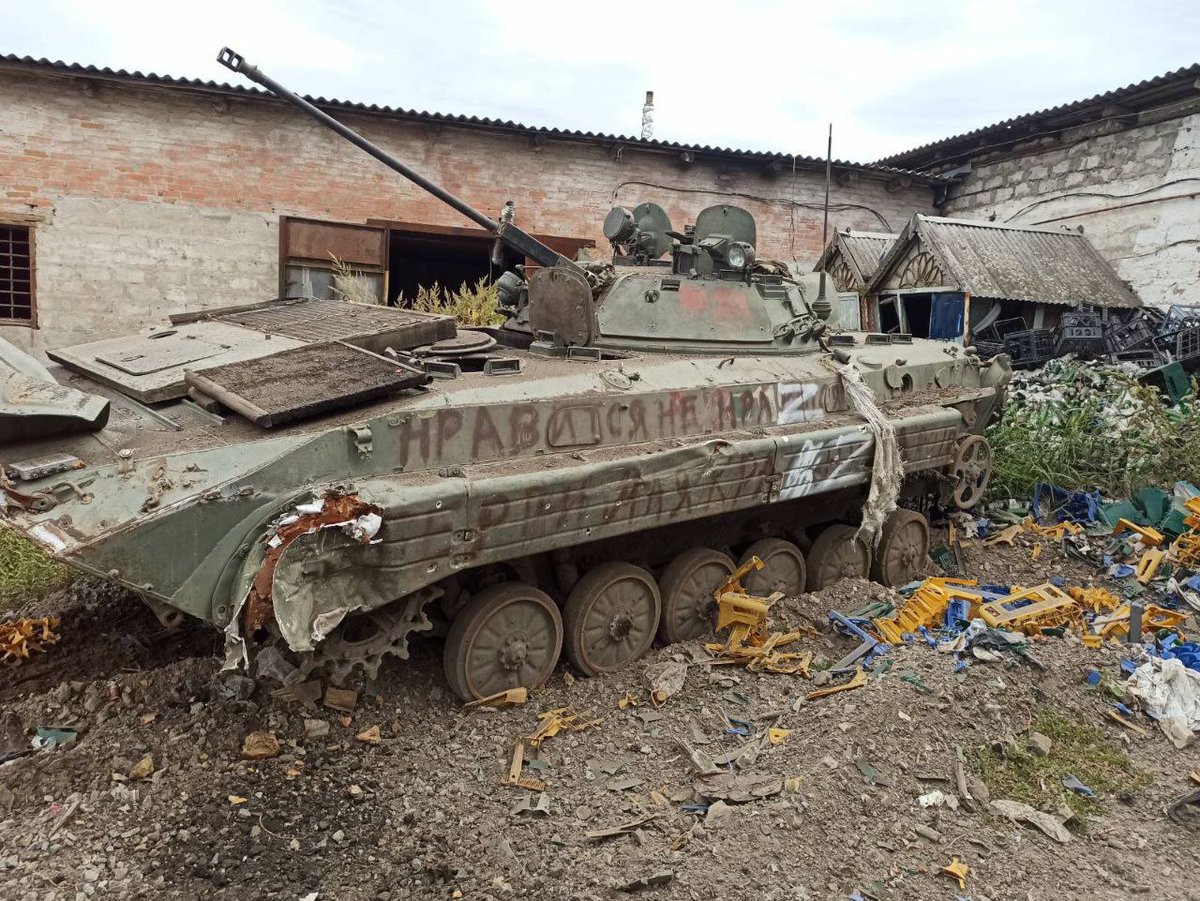



75/ All combat-ready units were redeployed to the eastern front. And the troops in Izyum lost the most important thing - mobility. Because the commanders did not consider this direction important for their attack, and did not believe in an attack by the AFU.
76/ This is why Putin's units were so slow to respond to the Ukrainian offensive and why they fled so quickly! They simply did not have enough heavy equipment to spend time moving it around. They simply ran away in cars and on foot. 
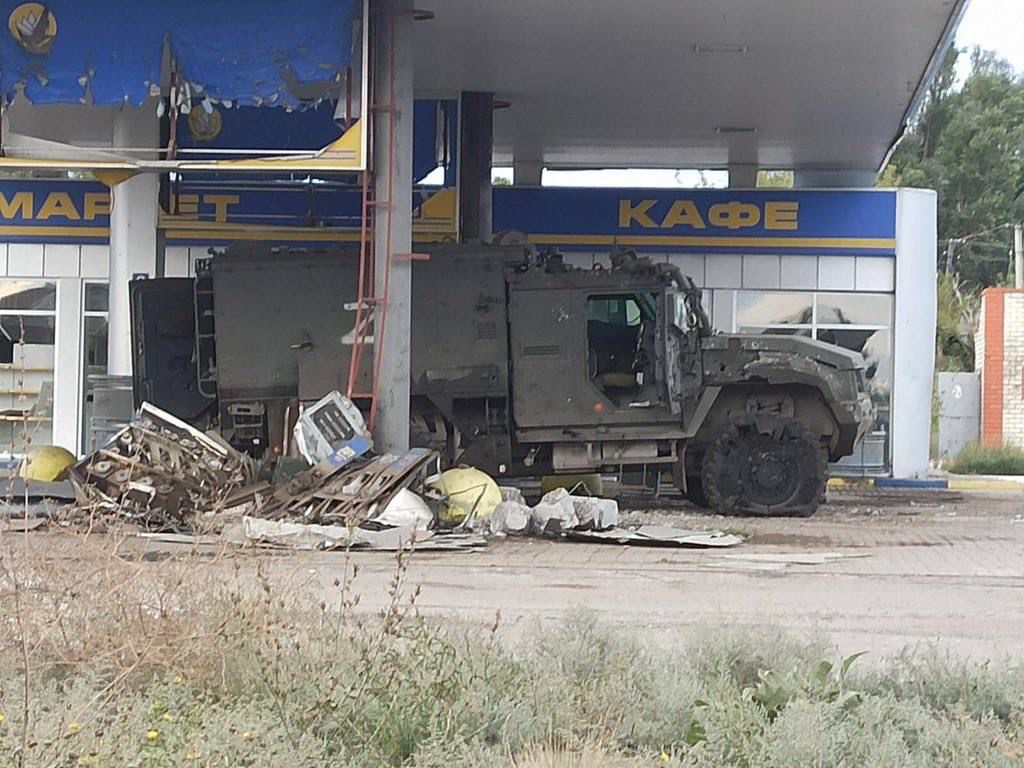
77/ Everything that I wrote above is very important for understanding the final point. Where we will place the arrows on the map! I will make references to the earlier conclusions of the thread and you will see how everything fits into a logical picture.
78/
E) Tactical mistakes. The Russian military grouping in the Kharkiv region was in a very uncomfortable position. First, it was stretched in a semicircle. Controlling little space to the north, but increasing the front to cover. Only part of the front ran along the reservoir.
E) Tactical mistakes. The Russian military grouping in the Kharkiv region was in a very uncomfortable position. First, it was stretched in a semicircle. Controlling little space to the north, but increasing the front to cover. Only part of the front ran along the reservoir.
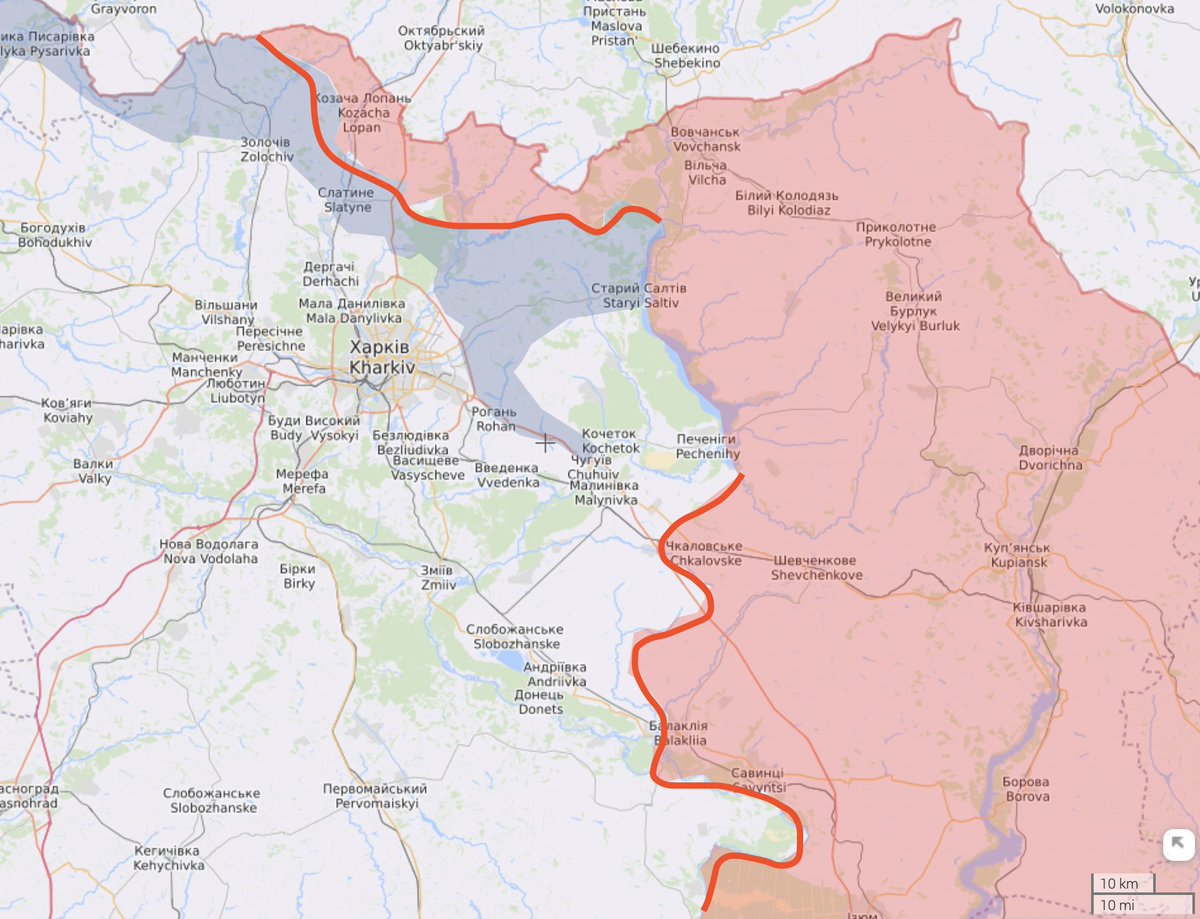
79/ The reservoir and the river also cut the front into two sections. The Russian troops should have withdrawn from the northern part of Kharkiv Oblast and built defences only along the Siverskyi Donets River and on to Balakliia, by transferring available units to this line. 

80/ The Ukrainian Armed Forces broke through the Russian defence between Balakliia and Volokhiv Yar. The main action took place in the Balakliia - Chkalovske - Kupiansk - Izyum area. Let us look at it in detail and start with supply routes. 
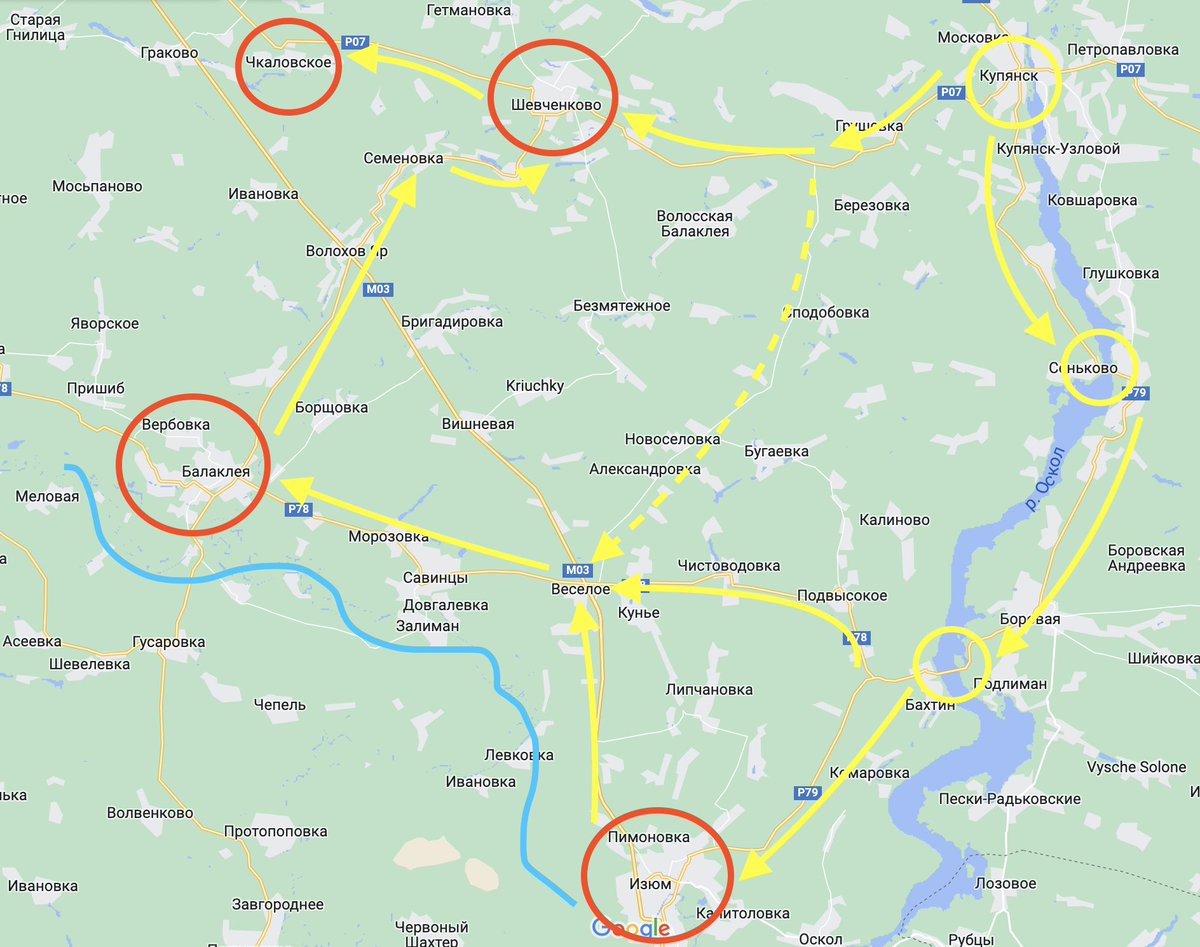
81/ I have marked in red the key points occupied by the Russian Army before the counterattack. The roads are marked in yellow, in blue I have drawn the line of the river that cuts off Balakliia from the south. 

82/ As you can see, the entire supply of the area depends on three crossings and the main one is in Kupiansk. It is a key town for the whole district, because it is where the railway and roads from Russia go to.
83/ Looking again at the same map, see how important the junction near Vesele is - in the very centre. It is the link between Balakliia and Izyum and the supply route to these towns passes through it. The supply route to Izyum from Kupiansk passes through a single road. 
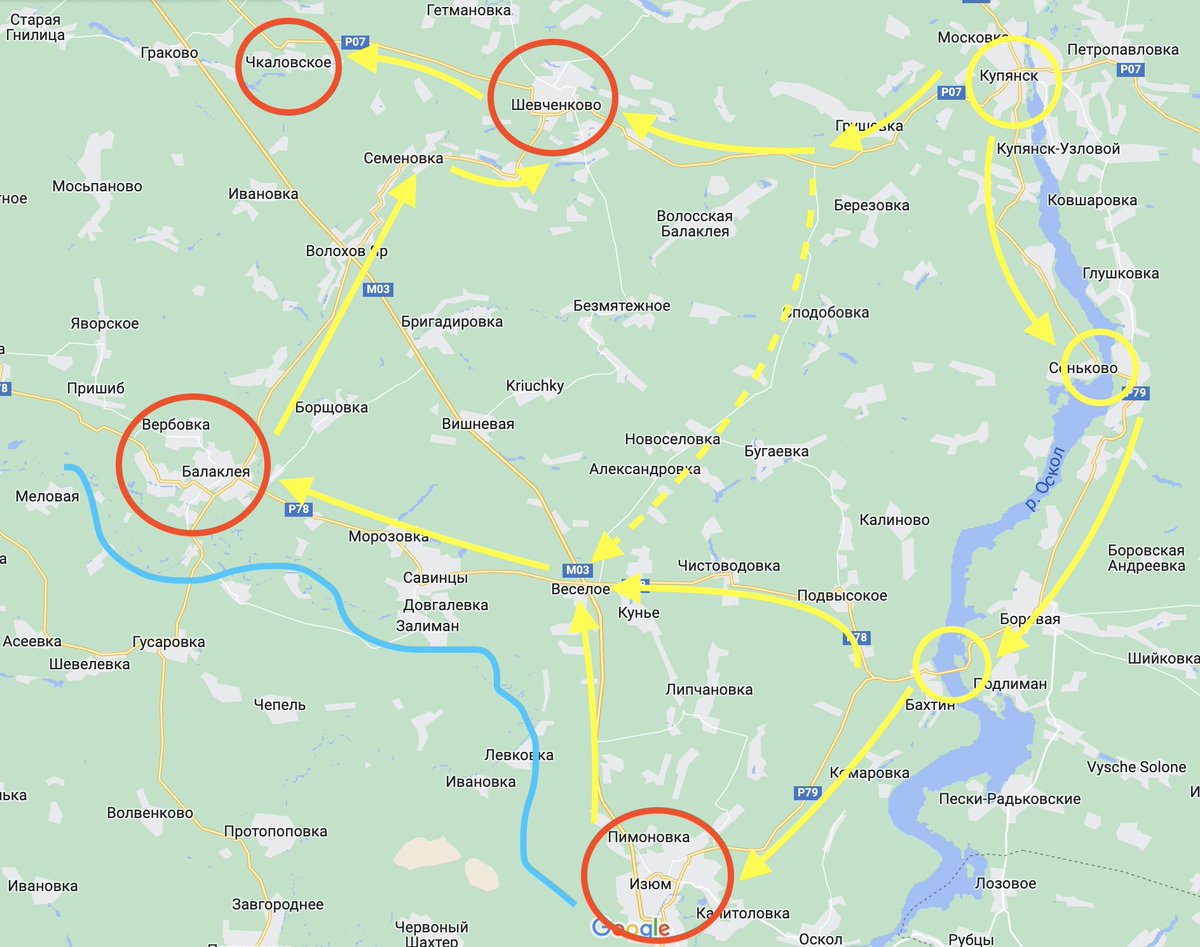
84/ It was to be expected that the Russian army would defend its positions as follows: Forward units would occupy Izyum, Balakliaa and Chkalovske. Additionally, Volokhov Yar, Semenivka, and the banks of the Siverskyi Donets River would be reinforced. 

85/ Separate groups would defend Vesele, Kupiansk and the two crossings at Senkovo and Horokhovatka.
Immediately you can see that you get a thin line of defence. It is unclear where to line up the second. We should probably now consider reserves.
Immediately you can see that you get a thin line of defence. It is unclear where to line up the second. We should probably now consider reserves.
86/ The reserves should be held in Shevchenkove and somewhere else in the centre, perhaps near Vyshnevaya and perhaps something in Morozovka. (in pink)
Implementing such a plan would have required a massive increase in the density of troops in a small area.
Implementing such a plan would have required a massive increase in the density of troops in a small area.
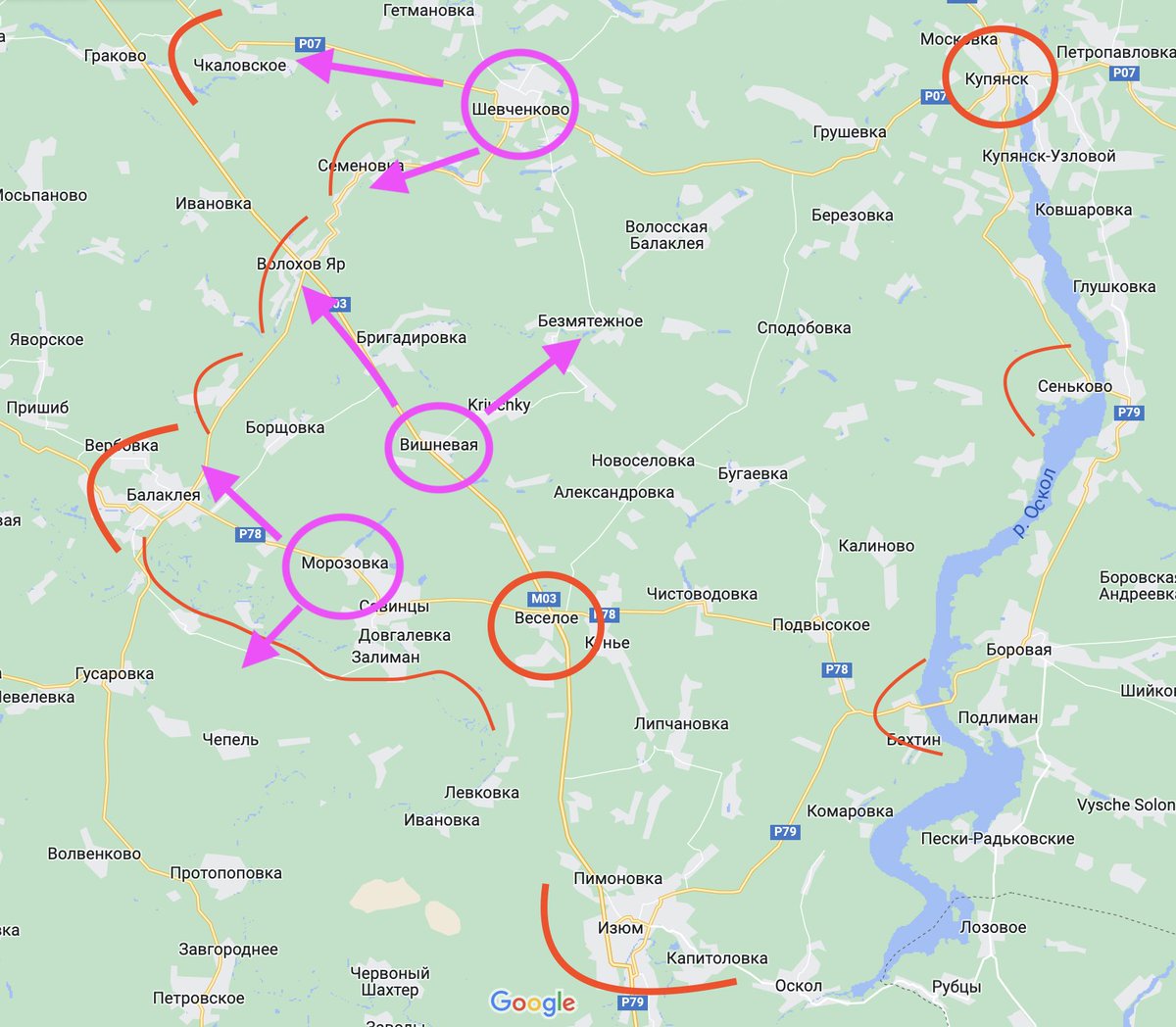
87/ It is perfectly clear why the Ukrainians attacked here. It is a corridor between rivers (and marshy banks) that could be used to get in. The Russian army should have spotted this and provided defensive positions!
Here I will return to the issue of supply.
Here I will return to the issue of supply.

88/ The more troops, the more difficult it is to supply them. But poor communications make it necessary to deploy more troops. A vicious circle, a trap into which the army drove itself. And obviously the decision was wrong.
89/ Putin's generals decided that this section was not very important. Given the shortage of troops and equipment (read above about reinforcements), they left small units on the Kharkov front for a back-up. And they did not take care of the reserves at all. Why am I so sure?
90/ Well, it's simple.
The Ukrainians broke through the front and fought on the Balakleya-Volokhiv Yar-Shevchenkove line for about two days.
The Ukrainians broke through the front and fought on the Balakleya-Volokhiv Yar-Shevchenkove line for about two days.
91/ First they stormed Verbivka (5 September), then broke through the defences (6 September) and only on 7 September the breakthrough went further. By 8 September everything was concluded. 



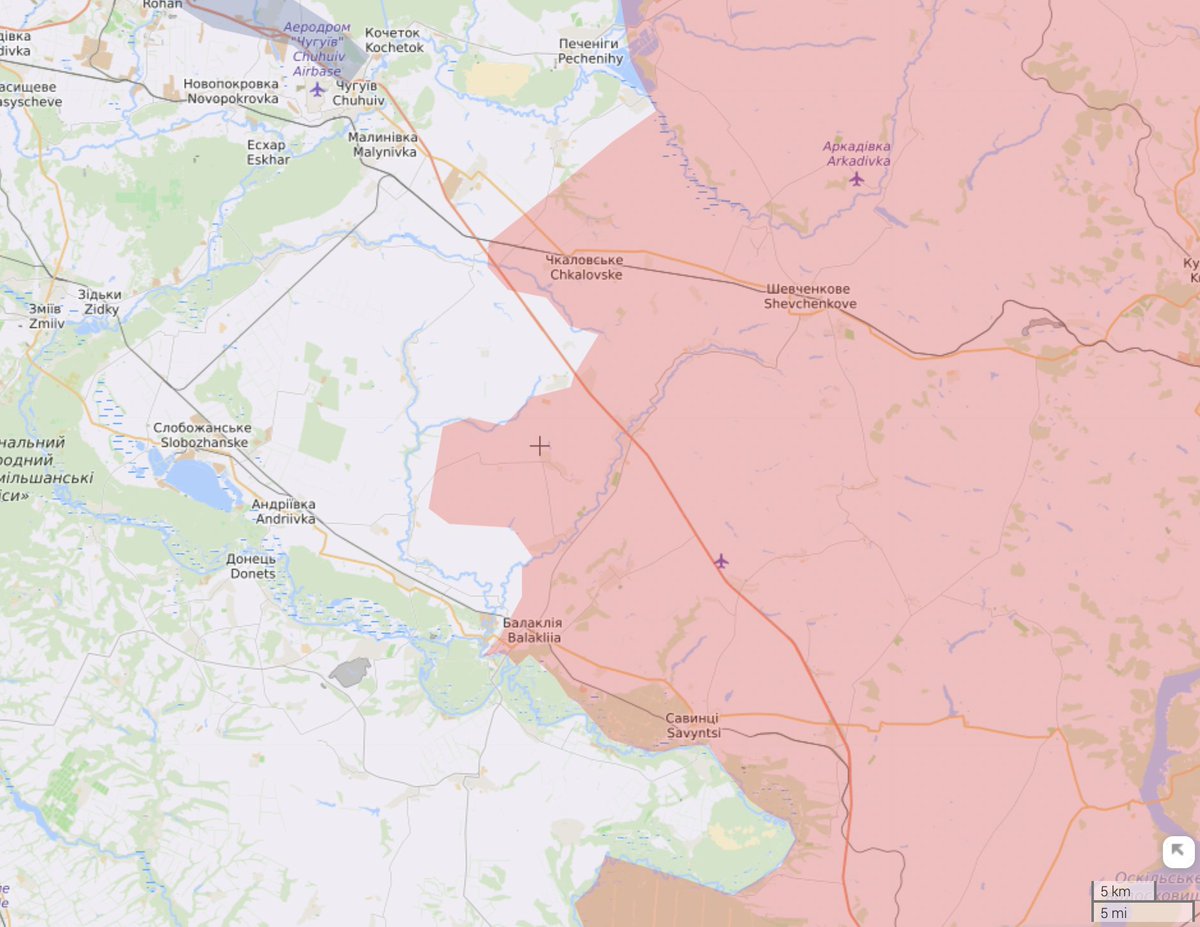


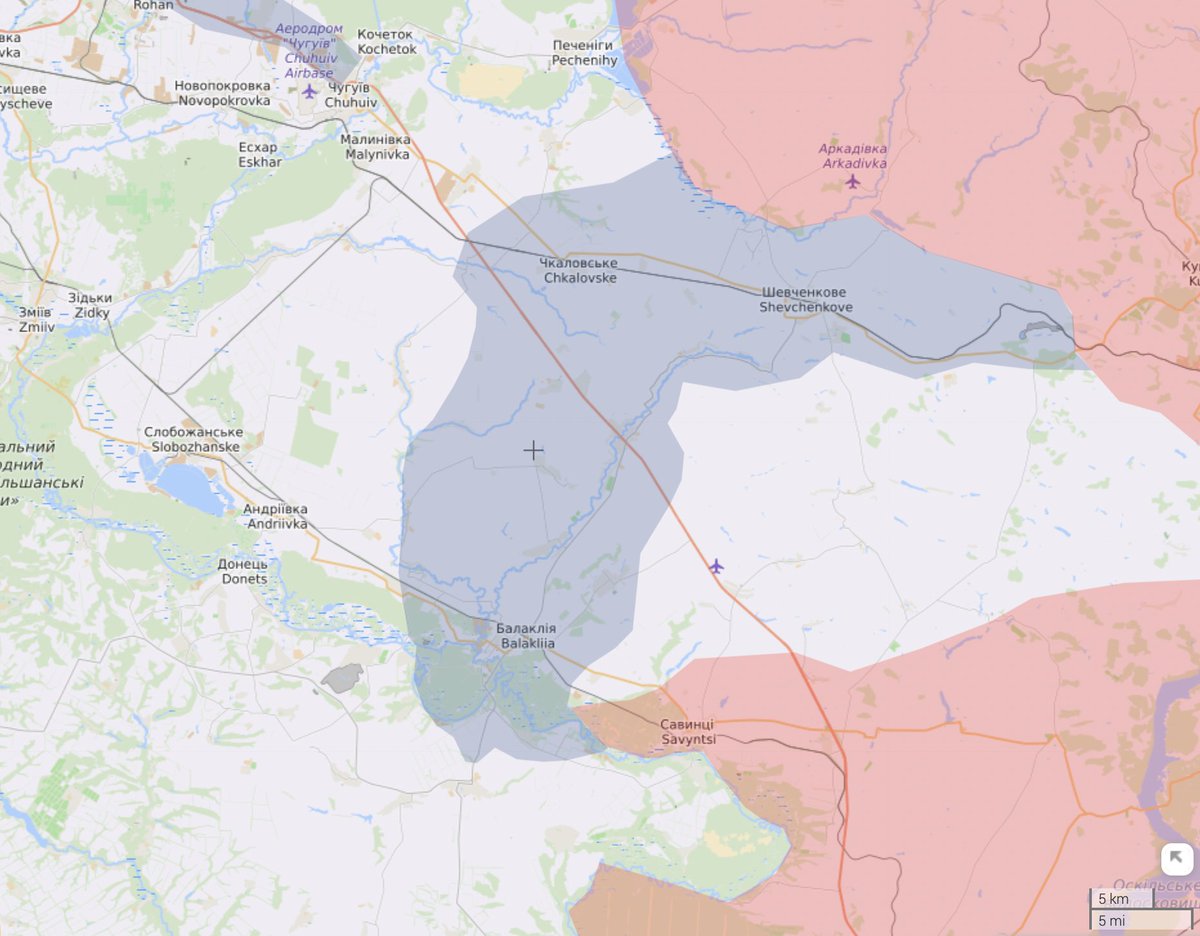
92/ There was time to react, it was possible to deliver troops even from Kupiansk to Volokhiv Yar in 2-3 hours, it's only 60 km. If the reserve had been in Shevchenkove, it would have taken half an hour to respond directly to the attack. But all this was not done.
93/ The Ukrainians passed through the corridor with little resistance, were not distracted by the Balakliia siege and rushed towards Veselee and Kupiansk and then other crossings. Depriving the Russian army in Izyum of any chance of escape.
But this raises a logical question.
But this raises a logical question.
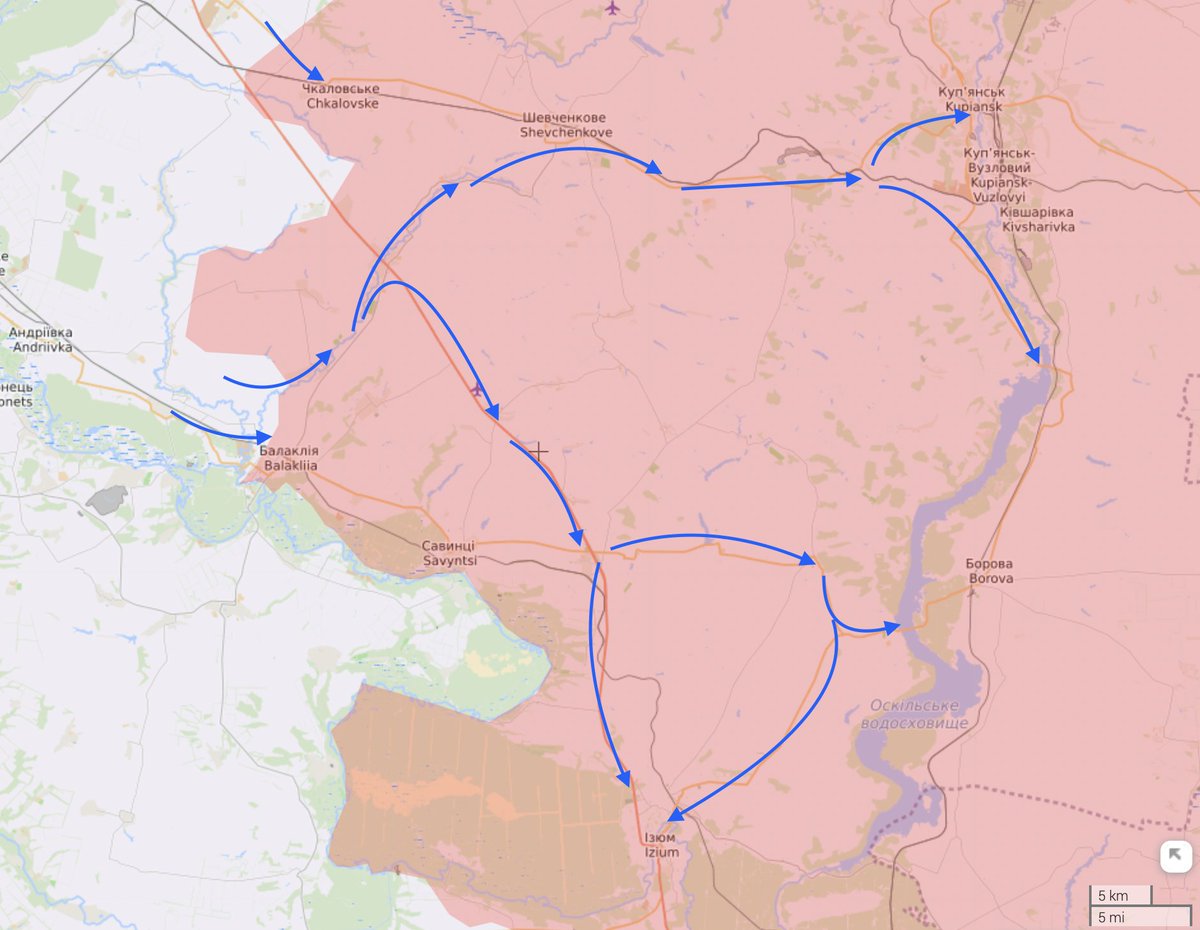
94/ Back in the spring there was a large Russian grouping in Izyum. Why didn't the troops from there launch a powerful counterattack? After all, they should have had enough fuel and ammunition for at least short fights. Could they have fought for a week without supplies?
95/ Since there was no such strike, a simple conclusion is that there was no large grouping of troops in Izyum at the beginning of September 2022! Yes, there were some isolated units, but clearly not enough for a full-fledged battle.
96/ The nature of the fighting on the Russian side was based on the factors I described in the first four paragraphs. The area was defended by the Rosgvardiya (SOBR, OMON) and the regular army.
97/ And in a completely idiotic way the Rosgvardiya ended up on the front line in Balakliia and Volokhiv Yar.
Which of course immediately led to a breakthrough in that line. I think it went like this.
Which of course immediately led to a breakthrough in that line. I think it went like this.
98/ Everyone who could fight properly was taken from under Izyum, and the Rosgvardiya was put in charge of guarding the captured settlements. To suppress the locals, to chase the partisans away. The place was quiet, no one had fought here for a long time.
99/ But it turned out to be the other way round. Because Russian intelligence did not find anything. And they could not cover the front properly because there were not enough troops. And those that were there were without equipment, reinforcements and commanders.
100/ And there was also a lack of communication: the OMON were surrounded and no one helped them.
It's probably not just about the reserves, but also about poor communication between the factions.
It's probably not just about the reserves, but also about poor communication between the factions.
101/ There is no single command, one general who holds the entire front and all the units here in his hands. And those units that were at the front lacked serviceable equipment and combat power.
102/ Subsequently, when the front collapsed, the Russian commanders got scared and hastily withdrew troops from the entire Kharkiv region west of the Oskil River. This is a logical decision, probably taken by major commanders like Shoygu.
103/ But there was no time to evacuate the collaborators.
In the end, the territory for which the Russian army was holding on so tightly returned to Ukraine in just one week.
In the end, the territory for which the Russian army was holding on so tightly returned to Ukraine in just one week.
104/ The Ukrainian Armed Forces have significantly shortened the front, which of course benefits Putin's army as well. But let's not forget the psychological blow to the Russian army. We don't know yet if it was critical, but it was significant.
105/ I promised to say a few words about the actions of the AFU. First, Ukraine's military intelligence worked magnificently and accounted for two-thirds of the total success. The planning was also excellent.
106/ A convenient area was found for the attack, and the attack itself proceeded strictly in line with the main objective.
All preparations were concealed and even when the breakthrough began, its scale and volume of troops was unknown to the Russian army.
All preparations were concealed and even when the breakthrough began, its scale and volume of troops was unknown to the Russian army.
107/ The troops themselves worked well, including the artillery, which moved quickly to follow the advancing troops. An exemplary example of an offensive operation.
Let's not forget the motivation of Ukrainian soldiers.
Let's not forget the motivation of Ukrainian soldiers.
108/ Russian soldiers are motivated by money or fear of punishment. Ukrainian soldiers are motivated by a desire to liberate their homeland. I think it is superfluous to explain why the latter will always win out over the former.
109/ Here's an example. When Russian "heroes" are shown, they blur their faces. The Ukrainians, however, show this teacher's return from the front. Not only does this speak volumes about the motivation of Ukraine's defenders, such videos motivate others.
110/ But where will Ukraine attack next? I see two potential options. Kherson region: here the situation is similar to Izyum, there is a river and partial isolation of Russian units. The second option is through Liman to Rubizhne and Sievierodonetsk.
111/ More details to come in later threads. /end
[Note: Ian's original thread in Russian is linked below.]
[Note: Ian's original thread in Russian is linked below.]
https://twitter.com/ian_matveev/status/1570372266206302208
• • •
Missing some Tweet in this thread? You can try to
force a refresh


